Make a set of Rama and Sita puppets and use them in a Diwali small world activity to enjoy imaginary play and storytelling.
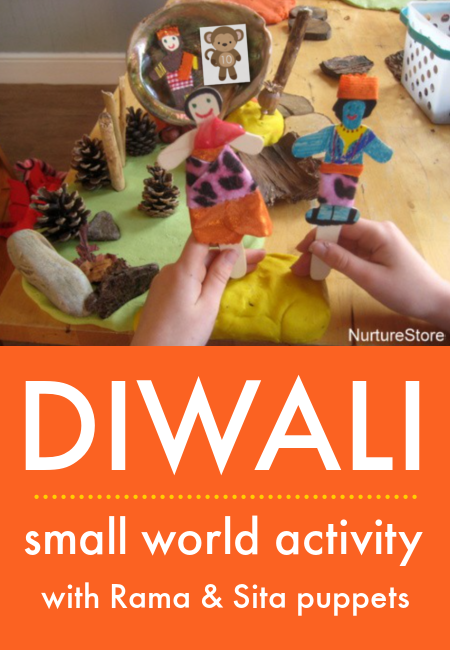
Diwali small world activity using Rama and Sita puppets
Bring the Diwali story to life with your children by making a Diwali-themed small world activity and using a set of Rama and Sita puppets to re-tell their famous story
This article is one of our Diwali activities and crafts for children resources.
In this article you can:
:: learn about Diwali
:: learn about Rama and Sita and the Diwali story
:: see how to make a set of Rama and Sita puppets
:: download a free, printable Diwali puppet set to colour in and cut out
:: see how to make a Diwali-themed small world activity for storytelling and imaginary play
:: find more links to Diwali crafts and activities
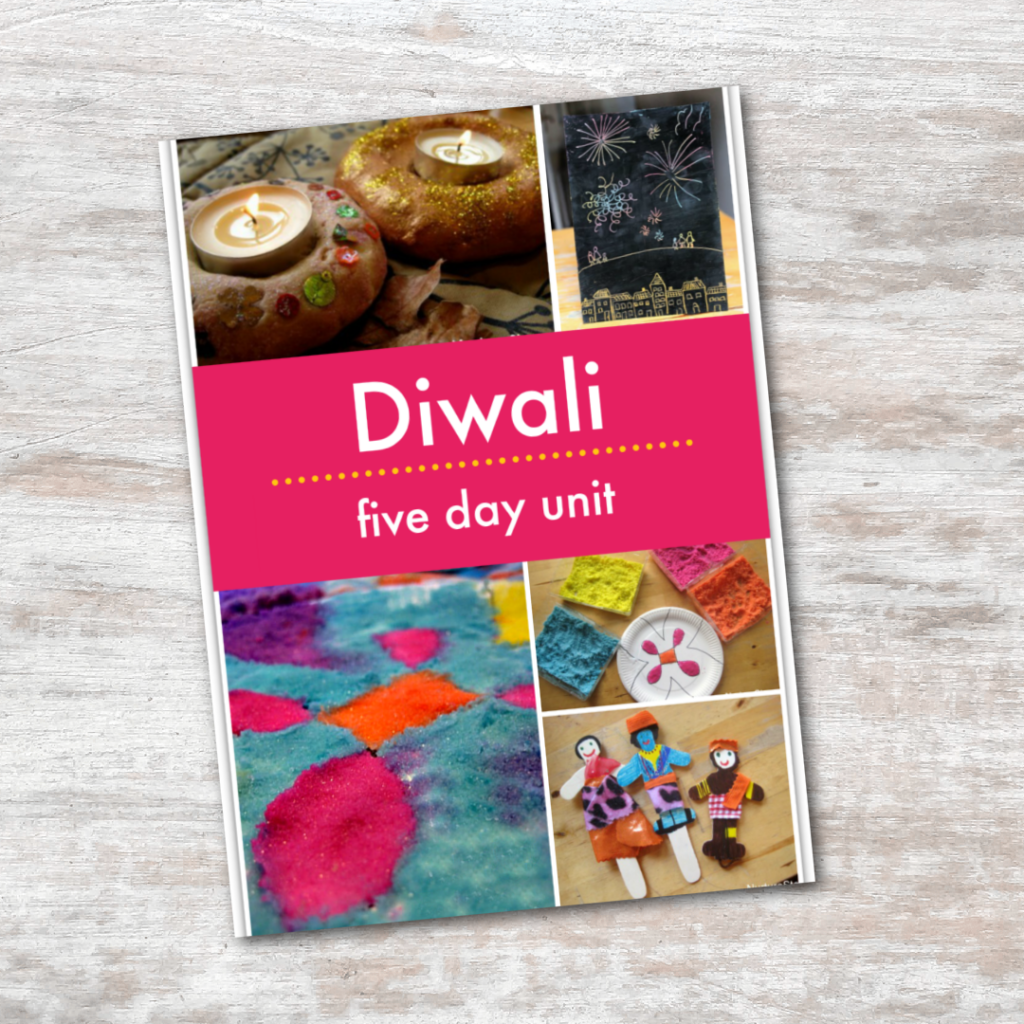
Ready-made Diwali Unit
If you’re a member of our Play Academy you can download a ready-made five day Diwali Unit and you’ll be ready to lead a week of fun and educational Diwali activities with your children.
This Unit is part of our Festivals specialist curriculum pathway, and is a part of a set of ready-made units you can use to teach your children about the festivals of the world all through the year. Based on the teaching philosophy of hands-on learning, the Play Academy festivals curriculum is engaging, effective and loved by children.
See more details of this Diwali Unit, and all the other specialist curriculum pathways and ready-made units you can choose from, in the Play Academy here.
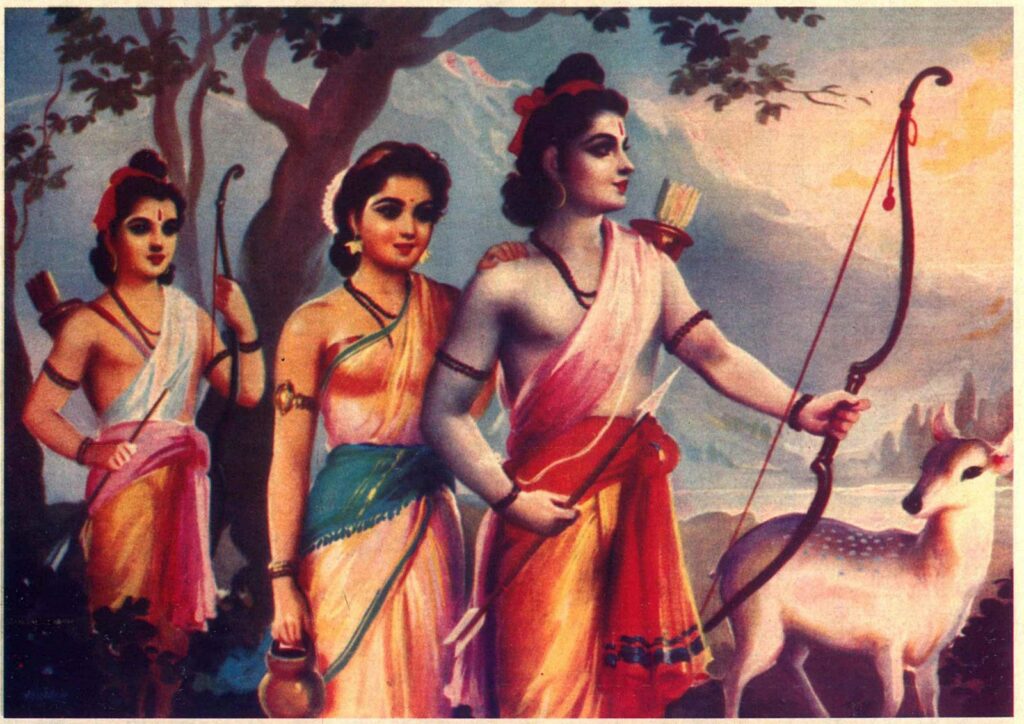
Photo: Tej Kumar Book Depo – In the public domain
Who are Rama and Sita?
The story of Rama and Sita is at the centre of the Indian festival of Diwali.
From the epic Hindu story, the Rāmāyaṇa, it is the story of good winning over evil, as King Rama travels to rescue his kidnapped wife, Sita.
You can find out more about the story of Rama and Sita here, including watching a retelling of the story and learning about the four main characters of Rama, Sita, Ravana and Hanuman.
And see NurtureStore’s Diwali crafts and activities here.
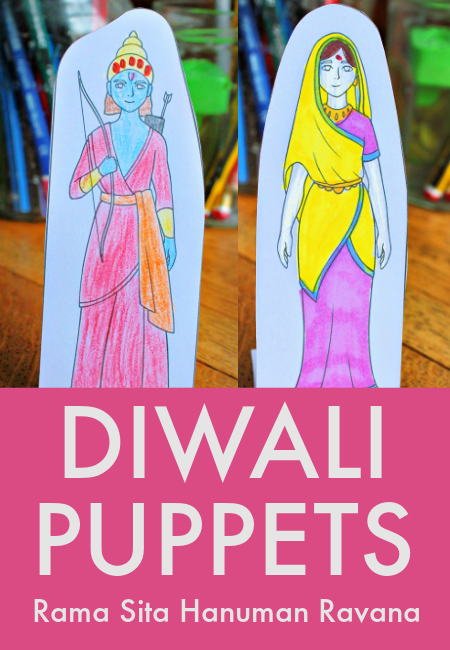
How to make Rama and Sita puppets
To make a set of characters for your Diwali small world you can use our free, printable Diwali puppet set or make your own.
Download our free printable Rama, Sita, Ravana and Hanuman puppets, colour in them in, and follow the simple instructions to turn them into playable puppets.
Or make your own:
Start with a set of wooden stick puppets or cut out people shapes from card.
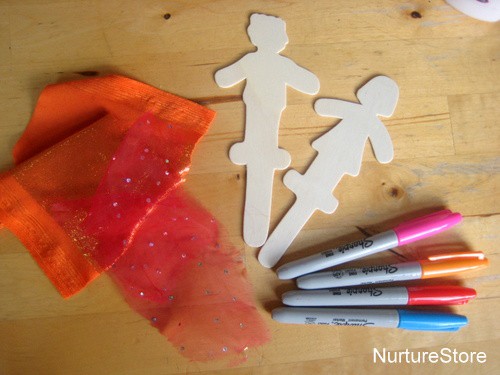
Use our guide to the Diwali story to see pictures of Rama, Sita, Hanuman and Ravana and talk about how each character looks.
:: What colours and clothing are they wearing?
:: Are they holding anything?
:: What character traits do they represent?
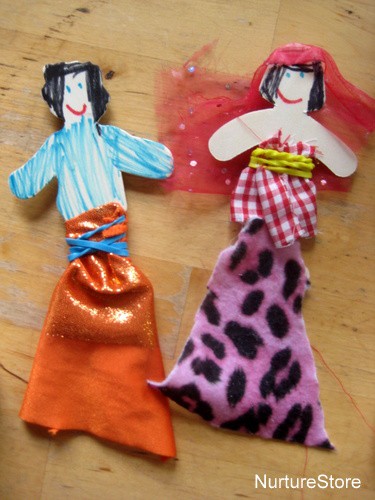
Then customise your people shapes to make your own version of the characters. You might use marker pens, paint, and fabric.
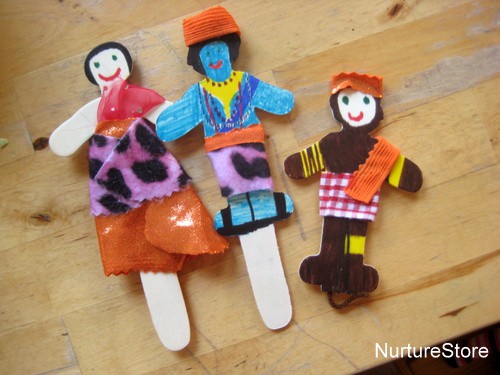
Double sided-sticky tape and elastic bands are great for holding fabric in place, as they’re mess free and you don’t need to wait for any glue to dry before you can start acting out your story.
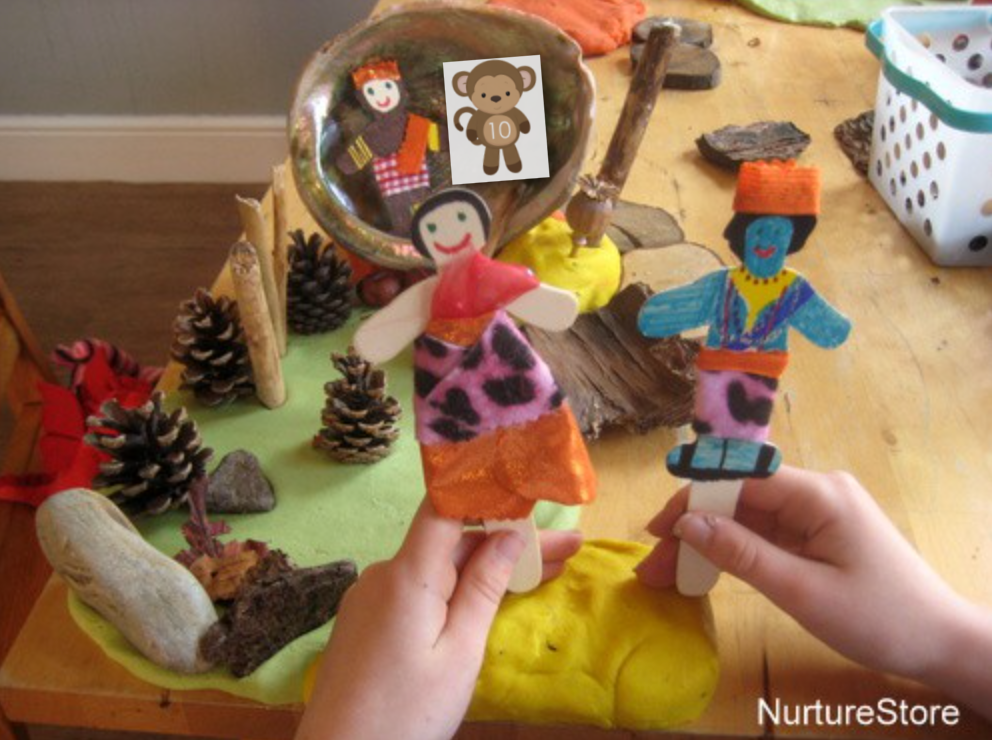
How to make a Rama and Sita small world for Diwali imaginary play
Once you have created your puppet characters, you can create a small world for them to adventure in.
Set out a selection of loose parts that you children can use to create their story setting. You don’t have to have a clear idea in mind as to how each piece can be used: let your children decide, using their imagination and creativity.
You might offer:
:: a tray or piece of fabric to define the play area
:: natural loose parts such as twigs, wood pieces, shells, pine cones, pebbles, acorns, conkers
:: junk model items such as cardboard boxes, old parcel/gift wrap, sticky tape, scissors
:: sensory play materials such as homemade play dough
You can download a set of printable monkey army number cards here.
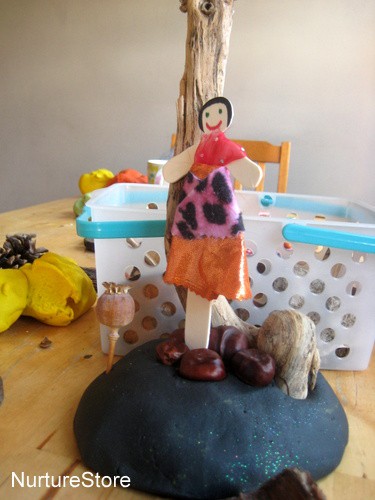
Re-telling the Diwali story through play
Invite your children to use the loose parts to create the setting of their story.
As they play they can add any extra items them need to keep their story going.
They may act out the traditional Diwali story in sequence or they might add their own twists and turns and even create a brand new story featuring the Diwali characters.
All of this small world play is a wonderful way for children to develop their language, imagination and creativity.
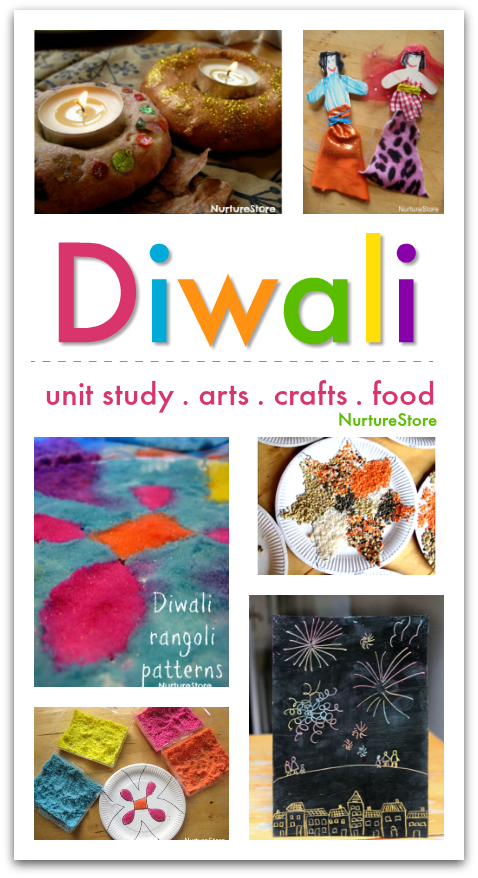
More Diwali crafts and activities
For more great ideas to learn about and celebrate Diwali with your children, including Rama and Sita puppets and diya crafts, see our full index of Diwali crafts and activities for children.



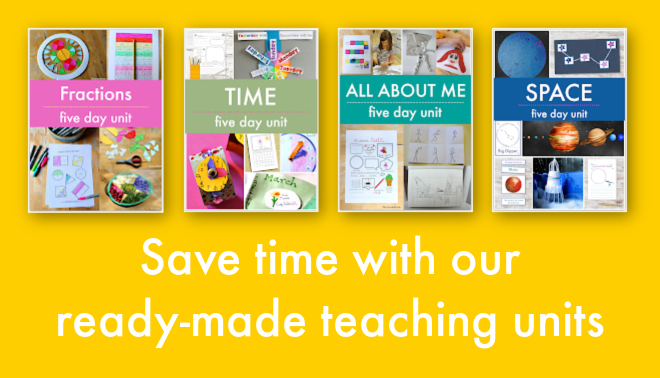
Thanks for the book recommendation! I had a lot of trouble finding engaging children’s books on India at our library recently. After many failed attempts, I’ve been on the lookout for recommendations.
The puppets look great, too 🙂 .
I love all these Diwali activities you are featuring – what a great cultural experience for any child!
Thank you so much Cathy for sharing ideas about Diwali on your site. I love sharing them with my children as they learn about this special holiday to our family. I’ve shared your idea on our India Pinterest Board too. https://www.pinterest.com/educatorsspinon/india-culture-and-hindi-language/